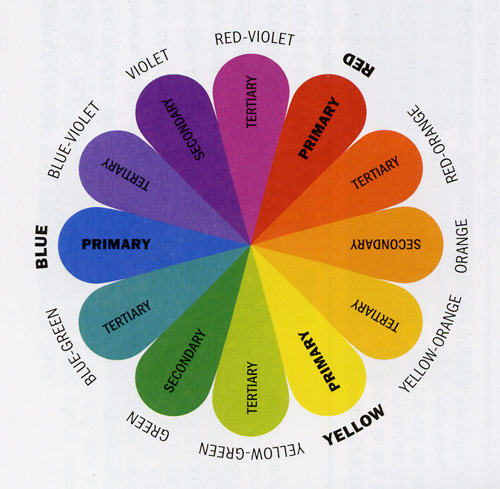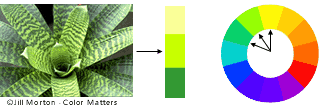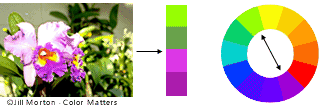Usually people will choose one or two colors, but why stop there?! As you may know, it's been a trend to not exactly choose any colors and instead have a wildly colorful wedding (this can be done well, and also, not so well). It all depends on the season, venue, and theme of your wedding, what will work and what won't. But you, by no means, have to or even should stick with one or two colors for your wedding day.
A beautifully styled wedding will have one or two main colors, sometimes three, but there are other colors involved too; those, my friends, are accent colors. It's all about color theory. We can start with the basics.
 |
| http://images5.fanpop.com/image/photos/31600000/color-wheel-colors-31651206-500-489.jpg |
Blue, red and yellow are the primary colors. When mixed, you get the secondary colors, orange, violet, and green. And similarly you get the tertiary colors, red- orange, yellow-orange, yellow-green, blue-green, blue-violet, and red-violet.
 |
| http://www.drawing-and-coloring.com/images/color-wheel-warm-cool.png |
When you split the wheel in half you get the warm colors and cool colors.
This is helpful to know, because using warm colors as the main colors are great for summer and cool are great for winter weddings. Spring and Autumn may be a mix of theses colors.
Other than staying with warm or cool colors, you can choose your wedding colors based on the rules of basic color theory.
Analogous Color:
 |
| http://www.colormatters.com/images/images1/ctheory_leaf.gif |
Any three colors found next to each other on the color wheel. Usually one of these colors will be the MAIN color. This color scheme is in trend right now with ombre weddings.
Complementary Color:
 |
| http://www.colormatters.com/images/images1/ctheory_orchid.gif |
Two colors that sit directly opposite each other on the color wheel. Red/Green. Blue/Orange. Yellow/Purple etc. This example shows Yellow-Green and Red-Violet. But as the picture shows, you don't need to just stick with the two main shades, you can pull darker and lighter shades of your two main colors to accent.
Triad Colors:
 |
| http://www.tigercolor.com/Images/Triad.gif |
A triadic color scheme is colors that are evenly spaced from each other on the color wheel. If a triadic color scheme is chosen, one will be the main color and the others will be accent colors.
Split Complementary:
 |
| http://www.tigercolor.com/Images/SplitComplementary.gif |
Split complementary colors uses a base color, and unlike with complementary colors, there are two other colors selected that are adjacent to the direct complementary color of the base color.
Tetradic Colors:
 |
| http://www.tigercolor.com/Images/Tetrad.gif |
A color scheme using four colors, arranged into two complementary pairs. Red/Green with Orange/Blue; Yellow/Purple with Blue/Orange, etc. If using this scheme, again, only one color should be the dominate color. You must also consider the balance of your warm and cool colors.
Square Colors:
 |
| http://www.tigercolor.com/Images/Square.gif |
A real life example, you ask?
My best friend is getting married in September, in Washington, it's that sweet spot between summer and autumn. You get the best of both worlds around here, the weather is normally still warm, not too hot or too cold yet. And the leaves are just beginning to change, so we aren't in full autumn swing yet, but we are just getting past the summer heat and long days of sunshine. The colors she chose are a deep purple, we'll call it eggplant, and dark gray. Instead of sticking with those two, I suggested. Using pale green, a lighter silver, and lighter shades/slightly different hues of eggplant (which falls into a red-violet category). Using a little mix of analogous color and complimentary colors will not only enhance the main colors but will make it easier to find colors to decorate the entire event. When trying to stick to one color, and one shade of that color, matching becomes a bigger task than necessary and the event can look a little bland.
The mood board I put together for my friend to show her a great way to highlight her two main colors with examples from centerpieces and bouquets.

No comments:
Post a Comment